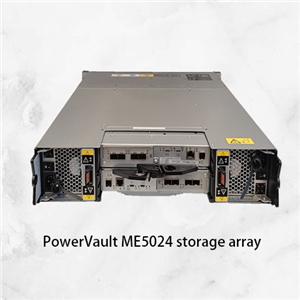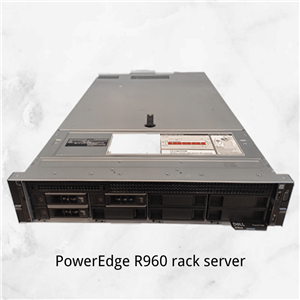the impact of US tariffs on the electronics industry and survival recommendations for electronics practitioners
Recently, there has been a surge in orders in the electronic market,
Many factories are busy with placing orders, and suppliers have seen a surge in orders recently, making their work extremely busy~
On the 2nd, US President Trump signed two executive orders at the White House regarding so-called "equivalent tariffs", announcing the establishment of a "minimum benchmark tariff" of 10% for US trading partners and the imposition of higher tariffs on certain trading partners. The White House issued a statement stating that President Trump declared a national emergency on the same day to enhance America's competitive advantage, protect its sovereignty, and strengthen its national and economic security.
Trump displayed a large plaque labeled with "equivalent tariffs," indicating which trading partners the United States plans to impose tariffs on and how much tariffs to impose.
Among them, China 34%, UK 10%, Brazil 10%, Australia 10%, Philippines and Israel 17%, EU 20%, Japan 24%, South Korea 25%, India 26%, South Africa 30%, Switzerland 31%, Indonesia 32%, Sri Lanka 44%, Vietnam 46%, Cambodia 49%.
Subsequently, the futures of the three major US stock indexes plummeted, with the Nasdaq futures falling more than 4%. The Japanese and Korean stock markets also plunged after opening, with the Nikkei falling more than 4% and the Korean Composite Index falling more than 2% at one point.
Gold bars, copper, pharmaceuticals, semiconductors, and wood products are not subject to "equivalent tariffs".

Deepseek has provided insightful advice to people in various fields of the electronics industry:
Analysis of the Impact of US Tariffs on the Electronic Component Chip Industry
1、 The Direct Impact of Tariff Policies on Imported Brand Chips ��
On April 2nd, the United States announced the imposition of differentiated tariffs (20% -46%) on countries such as the European Union, Japan, India, and China. Although semiconductors are included in the exemption list, the hidden costs of supporting components, logistics, and industrial chains will still push up the overall cost of imported branded chips. European and American chip agents represented by ST, TI, and NXP are facing two major pressures:
✅ Price inversion risk: The combination of tariffs and fluctuations in the US dollar exchange rate may result in some models having a landed price higher than the market spot price. Agents need to re evaluate their inventory strategy;
✅ Delivery time uncertainty: The original factory may adjust global production capacity allocation to avoid tariffs, and the delivery time for some models may be extended from 8 weeks to over 20 weeks.
2、 The chain reaction of various links in the industrial chain ��
✅ Import brand agent:
Accelerate the clearance of high tariff category inventory and shift towards distribution channels in low tariff areas;
Increase the stocking ratio of domestic alternative solutions to hedge policy risks.
✅ Traders and Distributors:
Short term speculation on scarce models, using the window period before tariffs take effect to hoard goods for arbitrage;
Develop transit trade channels for emerging markets such as Southeast Asia and the Middle East.
✅ Terminal factory:
Urgently revise the BOM list and conduct localization substitution verification for American chips;
Require suppliers to sign price lock agreements to transfer the risk of cost fluctuations.
3、The essence and risks of short-term prosperity in the electronic market ��
The current surge in electronic market orders is mainly driven by two factors:
The result of the combination of policy expectations and cyclical recovery
Tariff panic stocking: Enterprises hoard high-risk electronic materials.
Structural demand recovery: Demand for consumer electronics and AI chips (such as Broadcom PCI-E Switch) is increasing, unrelated to tariffs; But we still need to be vigilant: consumer electronics demand has not fully recovered, and the inventory digestion cycle of industrial chips is still higher than the healthy level.
Low profit trap: Distributors trade price for volume, and a 3% gross profit margin is difficult to sustain. We need to be alert to the risk of inventory depreciation after demand falls.
4、 Key to breaking through: survival advice for practitioners ��
✅ Domestic chip manufacturers:
Focus on the field of "replacing essential needs" (such as mid to low end MCUs, power management chips), and collaborate with terminal manufacturers to quickly complete certification; Intensify research and development of automotive and industrial control chips to fill the market gap left by the contraction of American manufacturers.
✅ Import agent:
Clearing high-risk inventory (such as automotive materials) and seeking rebates from the original factory; Lock in Southeast Asian bonded warehouses to reduce tariff costs.
✅ Distributors/Traders:
Establish a "tariff hedging combination": 50% domestic chips+30% exempted categories+20% high circulation imported materials, balancing risk and profit.
✅ Terminal procurement:
Require suppliers to provide a 'domestic substitution list' and prioritize the use of validated models; Establish a dynamic cost model to quantify tariff shocks.
✅ salesman:
Deeply cultivate the demand of "existing customers" and provide tariff response solutions (such as splitting orders, direct supply from bonded zones), rather than blindly expanding new ones.
�� Conclusion
The imposition of tariffs by the United States has accelerated the regionalization and localization process of the chip supply chain.
In the short term, panic demand drives up market heat, but long-term survival depends on whether companies can quickly adjust their strategies - reducing dependence on a single supply chain, embracing domestic substitution, and utilizing exchange rates and policy windows to complete low-cost layouts. In structural recovery, only those who combine efficiency and flexibility can win.
_________This article is excerpted from Shenzhen Fuliwei Technology




